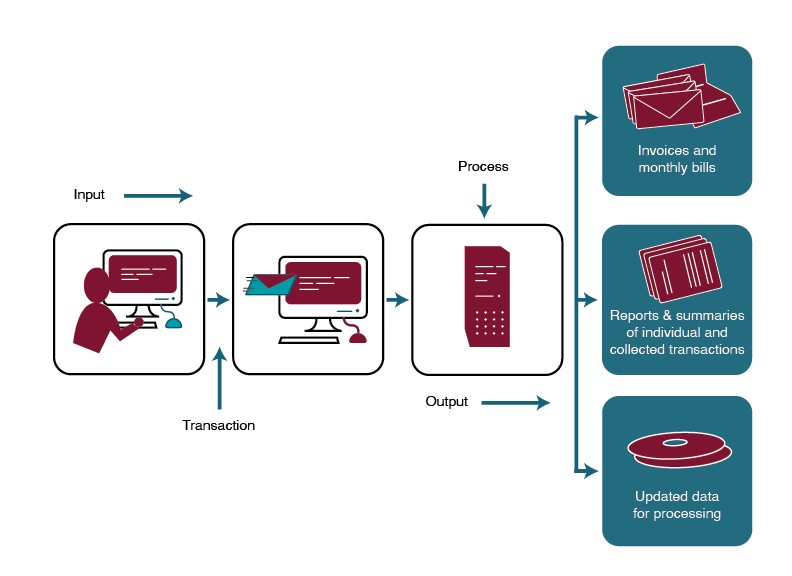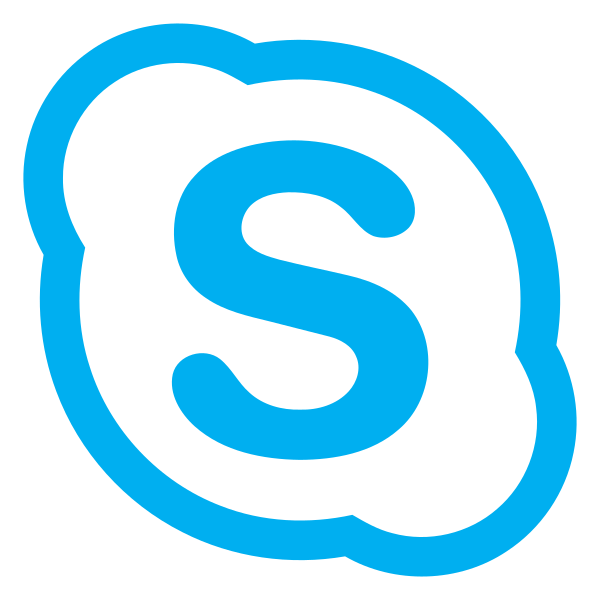7.4: Using Information Systems for Competitive Advantage
- Page ID
- 22764
\( \newcommand{\vecs}[1]{\overset { \scriptstyle \rightharpoonup} {\mathbf{#1}} } \)
\( \newcommand{\vecd}[1]{\overset{-\!-\!\rightharpoonup}{\vphantom{a}\smash {#1}}} \)
\( \newcommand{\id}{\mathrm{id}}\) \( \newcommand{\Span}{\mathrm{span}}\)
( \newcommand{\kernel}{\mathrm{null}\,}\) \( \newcommand{\range}{\mathrm{range}\,}\)
\( \newcommand{\RealPart}{\mathrm{Re}}\) \( \newcommand{\ImaginaryPart}{\mathrm{Im}}\)
\( \newcommand{\Argument}{\mathrm{Arg}}\) \( \newcommand{\norm}[1]{\| #1 \|}\)
\( \newcommand{\inner}[2]{\langle #1, #2 \rangle}\)
\( \newcommand{\Span}{\mathrm{span}}\)
\( \newcommand{\id}{\mathrm{id}}\)
\( \newcommand{\Span}{\mathrm{span}}\)
\( \newcommand{\kernel}{\mathrm{null}\,}\)
\( \newcommand{\range}{\mathrm{range}\,}\)
\( \newcommand{\RealPart}{\mathrm{Re}}\)
\( \newcommand{\ImaginaryPart}{\mathrm{Im}}\)
\( \newcommand{\Argument}{\mathrm{Arg}}\)
\( \newcommand{\norm}[1]{\| #1 \|}\)
\( \newcommand{\inner}[2]{\langle #1, #2 \rangle}\)
\( \newcommand{\Span}{\mathrm{span}}\) \( \newcommand{\AA}{\unicode[.8,0]{x212B}}\)
\( \newcommand{\vectorA}[1]{\vec{#1}} % arrow\)
\( \newcommand{\vectorAt}[1]{\vec{\text{#1}}} % arrow\)
\( \newcommand{\vectorB}[1]{\overset { \scriptstyle \rightharpoonup} {\mathbf{#1}} } \)
\( \newcommand{\vectorC}[1]{\textbf{#1}} \)
\( \newcommand{\vectorD}[1]{\overrightarrow{#1}} \)
\( \newcommand{\vectorDt}[1]{\overrightarrow{\text{#1}}} \)
\( \newcommand{\vectE}[1]{\overset{-\!-\!\rightharpoonup}{\vphantom{a}\smash{\mathbf {#1}}}} \)
\( \newcommand{\vecs}[1]{\overset { \scriptstyle \rightharpoonup} {\mathbf{#1}} } \)
\( \newcommand{\vecd}[1]{\overset{-\!-\!\rightharpoonup}{\vphantom{a}\smash {#1}}} \)
\(\newcommand{\avec}{\mathbf a}\) \(\newcommand{\bvec}{\mathbf b}\) \(\newcommand{\cvec}{\mathbf c}\) \(\newcommand{\dvec}{\mathbf d}\) \(\newcommand{\dtil}{\widetilde{\mathbf d}}\) \(\newcommand{\evec}{\mathbf e}\) \(\newcommand{\fvec}{\mathbf f}\) \(\newcommand{\nvec}{\mathbf n}\) \(\newcommand{\pvec}{\mathbf p}\) \(\newcommand{\qvec}{\mathbf q}\) \(\newcommand{\svec}{\mathbf s}\) \(\newcommand{\tvec}{\mathbf t}\) \(\newcommand{\uvec}{\mathbf u}\) \(\newcommand{\vvec}{\mathbf v}\) \(\newcommand{\wvec}{\mathbf w}\) \(\newcommand{\xvec}{\mathbf x}\) \(\newcommand{\yvec}{\mathbf y}\) \(\newcommand{\zvec}{\mathbf z}\) \(\newcommand{\rvec}{\mathbf r}\) \(\newcommand{\mvec}{\mathbf m}\) \(\newcommand{\zerovec}{\mathbf 0}\) \(\newcommand{\onevec}{\mathbf 1}\) \(\newcommand{\real}{\mathbb R}\) \(\newcommand{\twovec}[2]{\left[\begin{array}{r}#1 \\ #2 \end{array}\right]}\) \(\newcommand{\ctwovec}[2]{\left[\begin{array}{c}#1 \\ #2 \end{array}\right]}\) \(\newcommand{\threevec}[3]{\left[\begin{array}{r}#1 \\ #2 \\ #3 \end{array}\right]}\) \(\newcommand{\cthreevec}[3]{\left[\begin{array}{c}#1 \\ #2 \\ #3 \end{array}\right]}\) \(\newcommand{\fourvec}[4]{\left[\begin{array}{r}#1 \\ #2 \\ #3 \\ #4 \end{array}\right]}\) \(\newcommand{\cfourvec}[4]{\left[\begin{array}{c}#1 \\ #2 \\ #3 \\ #4 \end{array}\right]}\) \(\newcommand{\fivevec}[5]{\left[\begin{array}{r}#1 \\ #2 \\ #3 \\ #4 \\ #5 \\ \end{array}\right]}\) \(\newcommand{\cfivevec}[5]{\left[\begin{array}{c}#1 \\ #2 \\ #3 \\ #4 \\ #5 \\ \end{array}\right]}\) \(\newcommand{\mattwo}[4]{\left[\begin{array}{rr}#1 \amp #2 \\ #3 \amp #4 \\ \end{array}\right]}\) \(\newcommand{\laspan}[1]{\text{Span}\{#1\}}\) \(\newcommand{\bcal}{\cal B}\) \(\newcommand{\ccal}{\cal C}\) \(\newcommand{\scal}{\cal S}\) \(\newcommand{\wcal}{\cal W}\) \(\newcommand{\ecal}{\cal E}\) \(\newcommand{\coords}[2]{\left\{#1\right\}_{#2}}\) \(\newcommand{\gray}[1]{\color{gray}{#1}}\) \(\newcommand{\lgray}[1]{\color{lightgray}{#1}}\) \(\newcommand{\rank}{\operatorname{rank}}\) \(\newcommand{\row}{\text{Row}}\) \(\newcommand{\col}{\text{Col}}\) \(\renewcommand{\row}{\text{Row}}\) \(\newcommand{\nul}{\text{Nul}}\) \(\newcommand{\var}{\text{Var}}\) \(\newcommand{\corr}{\text{corr}}\) \(\newcommand{\len}[1]{\left|#1\right|}\) \(\newcommand{\bbar}{\overline{\bvec}}\) \(\newcommand{\bhat}{\widehat{\bvec}}\) \(\newcommand{\bperp}{\bvec^\perp}\) \(\newcommand{\xhat}{\widehat{\xvec}}\) \(\newcommand{\vhat}{\widehat{\vvec}}\) \(\newcommand{\uhat}{\widehat{\uvec}}\) \(\newcommand{\what}{\widehat{\wvec}}\) \(\newcommand{\Sighat}{\widehat{\Sigma}}\) \(\newcommand{\lt}{<}\) \(\newcommand{\gt}{>}\) \(\newcommand{\amp}{&}\) \(\definecolor{fillinmathshade}{gray}{0.9}\)Information systems (IS) is an umbrella term for the systems, people, technology, and processes designed to run a business.
Information Systems support or shape a business unit’s organizational strategy to provide a competitive advantage. Any information system - Business Process Management (BPM), Electronic Data Interchange (EDI), Management Information System (MIS), Decision Support System (DSS), Transaction Processing System (TPS) - that helps a business deliver a product or service at a lower cost, that is differentiated, that focuses on a specific market segment or is innovative is a strategic information system.
There are many different ways in which systems are utilized to automate processes and transactions. Factories use information systems to automate production processes and manage inventory. Banks use a variety of systems to process transactions such as deposits, ATM withdrawals, and loan payments. Information systems are also used to process customer orders and handle billing and vendor payments. Companies typically have several different types of information systems; each type serves a different level of organization based on the information requirements and types of decisions - Operational (workers), tactical (middle and senior managers), and strategic (executives).
Before we look at the different types of information systems, lets take a look at the types of decisions that are made at different levels of an organization.
- A structured decision is usually one that is repetitive and routine and is based directly on the inputs. For example, a company decides whether or not to withdraw funds from an international account depending on the current exchange rate. EDI and TPS typically handle structured decisions. Structured decisions are good candidates for automation and typically occur at operational level.
- An unstructured decision has a lot of unknowns and relies on knowledge and/or expertise. An information system can support these decisions by providing the decision-makers with information-gathering tools and collaborative capabilities. These are typically long-term, complex and strategic in nature, made at executive level. An example of an unstructured decision might be what types of a new product should be created and what market should be targeted.
- Semi-structured decision: A semi-structured decision is one in which most of the factors needed for making the decision are known, but human experience, judgement and other outside factors may still play a role. These are medium-term, less complex and typically made at tactical level.
The image below shows the relationship between the type of information system used for different decision types at different levels of an organization. Lets take more detailed look at how companies and organizations use these information systems.

Figure \(\PageIndex{1}\): A three-level pyramid model of different types of Information Systems based on the decision types at different levels of hierarchy in an organization. Image by Tejal Desai-Naik is licensed under CC BY- 4.0
Give an example for a structured, semi-structured, and unstructured decision. Match each decision with the appropriate Information as depicted in Figure \(\PageIndex{1}\).
Solution
Structured Decision: A company has a policy to provide a 5% discount on orders over $1,000. When an order comes in, the Transaction Processing System (TPS) automatically checks the order total and applies the 5% discount if it is over $1,000. This is a structured decision - the rules are pre-defined and consistently applied.
Semi-Structured Decision: A retailer is deciding pricing for the upcoming holiday season. This decision is not a simple decision. The manager either gets the historical data from the TPS or inputs data into a Decision Support System (DSS) about historical sales, demand forecasts, inventory levels, and competitor pricing. The DSS analyzes this data and provides a recommended optimal pricing strategy. The manager reviews the recommendations, but also applies their judgment based on experience.
Unstructured Decision: A company executive is evaluating whether to enter a new product line. The Executive Support System (ESS) provides data on market trends, growth projections, the company's core competencies, and potential partners. The executive weighs this information against strategic goals. But the final decision relies heavily on judgment and insight beyond quantifiable factors.
Transaction Processing Systems (TPS)
Transaction processing systems (TPS) are computerized information systems developed to process large amounts of data for routine business transactions such as payroll, order processing, airline reservations, employee records, accounts payable, and receivable. TPS eliminates the tedium of necessary repetitive transactions that take time and labor and makes them efficient and accurate, although people must still input data to computerized systems. Transaction processing systems are boundary-spanning systems that allow the organization to interact with external environments. TPS examples include ATMs, credit card authorizations, online bill payments, and self-checkout stations at retail stores. IT enables all of this to happen in real-time, meaning all the events and transactions that occur in a business or over the system are processed immediately causing no delay.
Figure \(\PageIndex{3}\) illustrates a transaction processing system in which the transaction is a customer's electronic payment of a bill. The TPS takes the customer's electronic payment as input, records the transaction, and the output consists of not only documents sent to outside parties (notification of payment received) but also of information circulated internally (in the form of reports), as well as information entered into the database for updating.

Figure \(\PageIndex{3}\): Transaction processing system adapted from Matthew Pauley licensed under CC-By-NC-SA
Decision Support Systems (DSS)
A decision support system (DSS) is a computerized information system that supports business or organizational decision-making activities by sifting through and analyzing a huge amount of data and producing comprehensive information reports. As technology continues to advance, DSS is not limited to just huge mainframe computers - DSS applications can be loaded on most desktops, laptops, and even mobile devices. For example, GPS route planning determines the fastest and best route between two points: analyzing and comparing multiple options and factoring in traffic conditions.
Marketing executives at a furniture company(like Living Spaces) could run DSS models that use sales data and demographic assumptions to develop forecasts of the types of furniture that would appeal to the fastest-growing population groups.
DSS can be as simple as a spreadsheet that allows for the input of specific variables and then calculates required outputs such as inventory management. Another DSS might assist in determining which products a company should develop. Input into the system could include market research on the product, competitor information, and product development costs. The system would then analyze these inputs based on the specific rules and concepts programmed into them. Finally, the system would report its results, with recommendations and/or key indicators to decide.
Decision support systems work best when the decision-maker(s) are making semi-structured decisions. A good example of a semi-structured decision would be diagnosing a medical condition Part of the decision is structured (symptoms, age, gender, history, etc of the patient) and part is based on human experience and judgment (doctor's interaction with the patient, medical knowledge and understanding). Farmers using crop-planning tools to determine the best time to plant, fertilize, and reap is another example.
A DSS can be looked at as a tool for competitive advantage in that it can give an organization a mechanism to make wise decisions about products and innovations.
Executive Support Systems(ESS)
Senior executives tend to be exposed to many unstructured decision situations that are open-ended and evaluative and that require insight based on many sources of information and personal experience. For example, a CEO of a company needs to decide to acquire another company. This is an unstructured decision. Executive support systems (ESS) compiles information from across the value chain - external industry reports, financial models, internal compatibility assessments, leadership profiles. These systems can assist in making more informed decisions by presenting timely and useful information (in the form of reports, charts and graphs) on changes in industry and society at large that may affect long-term and near-term future of the organization, its strategic goals, its performance, and overall ability of the organization to achieve its objectives.
Electronic Data Interchange (EDI)
EDI is a critical standard that ensures the above systems are a structured and standardized electronic communication method to allow businesses to exchange data within and between different organizations. Typically, processing a paper-based exchange of purchase orders and invoices takes a week. Using EDI, the process can be completed within hours since it eliminates the need for manual data entry, hence reducing human errors! By integrating suppliers and distributors via EDI, a company can improve speed, efficiency, and security, thus vastly reducing the resources required to manage relevant business information. IBM Sterling B2B Omtegrator, Cleo Integration Cloud, OpenText Trading Grid, SPS Commerce Fulfillment are some EDI software that can be used in conjunction with a data integration platform.
EDI allows TPS, MIS, DSS, and ESS to seamlessly exchange data, increase data accuracy, and support data-driven decisions at all levels of an organization.

Walmart played a major role in driving the adoption of EDI (Electronic Data Interchange) in business, though it did not originate the technology itself. EDI was first used in the transportation industry to exchange shipment data electronically in the 1960s to 19070s.
It was not until the mid-1980s when Walmart became one of the first major retailers to require its suppliers to use EDI to manage orders and invoices. Walmart continues to invest money to adopt EDI and forces its suppliers to adopt EDI to continue to do business with the company. This drove EDI into the mainstream business practice and a competitive advantage for Walmart.
EDI continues to be adopted for today's companies such as Amazon, Home Depot, Ford Motor.
Business Process Management (BPM)
Before a firm can automate a given process, it must understand its workflow and process how tasks get done. BPM is a method that helps companies to manage and optimize workflows, and there are many BPM software tools to aid in a firm's effort to systematically design, model, execute, monitor, and optimize workforces and processes within an organization. Some examples include IBM Business Process Manager, Oracle BPM Suite, SAP NetWeaver BPM, Appian BPM suite. Business process management is the automated integration of process information to streamline operations, reduce costs and improve customer service (Ken Vollmer, BPMInstitute.org). Like EDI, BPM is used both internally and externally, between applications within a business and between companies. Business process management can be narrow or large in scope.
Large financial institutions like Bank of America use BPM on a large scale to link, integrate and automate different applications - Credit cards, bank accounts, loans - thus resulting in a delivery time for financial transactions from weeks to minutes. On the other hand, a car rental company would use BMP to streamline and enable real-time vehicle rentals for customers. The BPM would automate everything from Renter information, selection of available vehicles, selecting the car, and making reservations to confirming and showing reservations all at the click of a few keys. This makes the process more efficient and productive giving the business a competitive edge. The figure below shows a simplified version of business process management for renting a car and can be implemented in a TPS, MIS, DSS, and ESS. We will discuss BPM in more detail in Chapter 8.

Figure \(\PageIndex{5}\): Simplified BPM for Car Rental Process image by Howard Pruitt by Visual Paradigm shared under Public Domain
Management Information Systems (MIS)
Management Information systems(MIS) consists of users, hardware, and software that support decision-making. MIS collects and stores its key data and produces information that managers need for analysis, control, and decision-making. For example, input from the sales of different products can be used to analyze trends of performing well and those that are not. Managers use this analysis to make semi-structured decisions such as changes to future inventory orders and manufacturing schedules.
In Chapter 1, we defined IT and IS (Figure 1.2.2). Where does MIS fit in?
Information Technology (IT) and Information Systems (IS) are sometimes used interchangeably. However, there is a difference between the two terms. The first four components, hardware, software, network communications, and data, are considered essential elements of IT infrastructure. An IS includes the four components of IT and the remaining two components, People and Process, that deliver value to organizations in setting up and using IT to meet specific organizations' goals (Figure 1.2.2)
MIS sounds similar and are often confused with IT and IS. Let's clarify it. MIS is a specific-purpose information system designed to support management, focusing on collecting, storing, and reporting data to managers within an organization to support business operations and tactical decision making. An example is a retail chain's sales reporting system.

Collaborative Systems
As organizations began to implement networking technologies, information systems emerged that allowed employees to collaborate differently. Tools such as document sharing and video conferencing allowed users to brainstorm ideas together and collaborate without the necessity of physical, face-to-face meetings.
Broadly speaking, any software that allows multiple users to interact on a document or topic could be considered collaborative. Electronic mail, a shared Word document, social networks, and discussion boards would fall into this broad definition. However, many software tools have been created that are designed specifically for collaborative purposes. These tools offer a broad spectrum of collaborative functions. They can exist as stand-alone systems or integrated with any of the information systems above. Here is just a shortlist of some collaborative tools available for businesses today:
Cloud Services refer to a wide variety of services delivered on-demand to companies and customers over the internet without the need for internal infrastructure or hardware.
|
|
|
|
|
|
|
|
|
|
|
|
Online Video Conferencing Services allows two or more people in different geographical locations to meet and collaborate.
|
|
|
|
|
|
|
|
|
With the explosion of the worldwide web, the distinction between these different systems has become fuzzy. Information systems are available to automate practically any business aspect - from managing inventory to sales and customer service. " Information Technology(IT)" is now the category to designate any software-hardware-communications structures that today work as a virtual nervous system of society at all levels.









